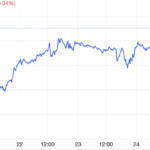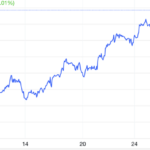
CPI average increase (up 3.63%) was mainly due to the rise in food, electricity, and healthcare costs, which are excluded from the core inflation calculation.
|
The 0.98% rise in the CPI for January 2025 compared to the previous month was influenced by nine groups of goods and services with increasing price indices and two groups with decreasing price indices.
The nine groups of goods and services that experienced an increase in their price indices are as follows:
– Healthcare and pharmaceutical products witnessed the highest surge, with a 9.47% increase compared to the previous month, contributing to a 0.51 percentage point rise in the overall CPI. Specifically, healthcare service prices rose by 12.57% due to the implementation of new healthcare service rates in certain localities, as outlined in Circular No. 21/2024/TT-BYT dated October 17, 2024, issued by the Ministry of Health, which sets out the pricing methods for healthcare examination and treatment services. Additionally, the transition to winter and significant temperature variations between daytime and nighttime led to an increase in cases of colds, flu, and respiratory issues. This, in turn, drove up consumer demand for painkillers, fever reducers, respiratory medications, vitamins, and minerals. Consequently, prices for vitamin and mineral supplements rose by 0.34%, digestive system drugs by 0.16%, and respiratory drugs by 0.12%.
– Transportation costs rose by 0.95% (contributing a 0.09 percentage point increase to the overall CPI). This increase was influenced by heightened travel demand during the year-end period, resulting in an 11.08% surge in air passenger transport prices. Road and waterway passenger transport prices both increased by 1.73%, while rail passenger transport rose by 1.71%, and bus passenger transport by 0.24%. Gasoline prices climbed by 2.02%, and diesel prices saw a 4.99% hike due to domestic price adjustments. Automobile part prices increased by 0.66%, motorcycle tire and tube prices by 0.28%, and other motorcycle part prices by 0.4%. Additionally, self-drive car and motorcycle rental services rose by 0.68%, vehicle maintenance services by 0.56%, and car washing and tire inflation services by 0.48% due to increased labor costs and year-end demand. Driving lesson fees also witnessed a 0.13% increase. Conversely, new automobile prices decreased by 0.26% compared to the previous month as car manufacturers offered promotional programs to stimulate consumption.
– Food and catering services experienced a 0.74% increase (impacting the overall CPI by 0.25 percentage points). This rise was driven by a 0.3% increase in food prices, a 0.97% surge in food prices (contributing 0.21 percentage points to the overall CPI), and a 0.33% rise in dining out costs.
– Beverages and tobacco products witnessed a 0.69% increase due to heightened consumption and their popularity as gifts during the Tet holiday. Consequently, alcohol prices rose by 0.8%, tobacco prices by 0.7%, and non-alcoholic beverage prices by 0.36%.
– The “other goods and services” category saw a 0.51% increase, mainly driven by price hikes in certain items: Haircutting and hair washing services rose by 1.91%, jewelry by 0.95%, wedding-related services by 0.56%, worship items by 0.42%, wristwatches by 0.3%, and personal care services by 0.11%.
– Clothing, hats, and footwear experienced a 0.38% increase due to rising labor and material costs, as well as increased demand for winter clothing and preparations for the upcoming Tet holiday. Specifically, other clothing items saw a 0.65% increase compared to the previous month, clothing services rose by 0.63%, ready-made garments increased by 0.4%, footwear services by 0.37%, fabric prices by 0.3%, footwear by 0.24%, and hats by 0.17%.
– Housing, electricity, water, fuel, and construction materials witnessed a 0.35% increase (contributing 0.07 percentage points to the overall CPI). This was primarily driven by rising rental prices, with apartment and house rental rates increasing by 0.84% due to higher demand for condominiums and rental properties. Additionally, the surge in real estate prices prompted landlords to adjust rental prices to match their investment costs. House repair service prices rose by 0.74%, and other housing-related services increased by 0.27% due to heightened year-end demand. Maintenance material prices climbed by 0.17% as cement and steel prices rose in line with consumer demand. Conversely, electricity prices decreased by 0.51%, and water supply prices fell by 0.29% due to reduced consumption during the winter season. Gas prices dropped by 1.26% as of January 1, 2025, following a reduction of VND 7,200 per 12 kg cylinder, in response to a decrease in global gas prices to USD 620 per ton.
– Household equipment and appliances saw a 0.31% increase due to higher demand during the wedding season and the upcoming Tet holiday. Specifically, domestic service prices rose by 1.73%, blender and juicer prices by 0.8%, glass, porcelain, and ceramic products by 0.66%, plastic and rubber items by 0.62%, lighting equipment by 0.35%, beds, cabinets, and tables by 0.29%, non-electric cooking appliances and air conditioners by 0.24% each, metal utensils by 0.17%, and electrical appliances by 0.14%.
– Culture, entertainment, and tourism witnessed a 0.27% increase, mainly driven by higher prices for flowers, ornamental plants, and landscapes, which rose by 1.59% due to increased demand during the Tet holiday. Package tours also became more expensive, with domestic tours rising by 0.52% and international tours by 0.99%, influenced by both higher consumer demand and increased service costs. Additionally, hotel prices increased by 0.43%, and books, newspapers, and magazines saw a 0.12% rise in prices.
The two groups of goods and services that experienced a decrease in their price indices are as follows:
– Education witnessed a slight decline of 0.04%, with education services dropping by 0.05%. This decrease was mainly attributed to Ho Chi Minh City’s implementation of the People’s Council Resolution on special policies to support tuition fees for public and non-public secondary school students and continuing education students for the 2024-2025 academic year.
– Post and telecommunications saw a 0.12% decrease, with smart mobile phones and tablet prices falling by 0.74%, accessories for smart mobile phones and tablets dropping by 0.72%, conventional mobile phones by 0.35%, and fixed telephones by 0.02%. Conversely, telephone repair services witnessed a 0.27% increase in prices.
Core inflation for January 2025 rose by 0.42% compared to the previous month and by 3.07% compared to the same period last year. The 3.07% increase in core inflation compared to the previous year was lower than the CPI average increase (3.63%). This was mainly due to the rise in food, electricity, and healthcare costs, which are excluded from the core inflation calculation.
– 09:10 06/02/2025
The Bank of Japan’s Rate Rise: A Bold Move or a Step Too Far?
The third rate hike in the past 10 months is yet another step by the BOJ towards normalizing monetary policy amid signs of persistent inflation and continued wage growth.
The Power Sector’s Prominent Policies in 2024
In 2024, the power industry witnessed a series of events and policy changes. Notably, EVN was authorized to increase electricity prices on a quarterly basis, the amended Electricity Law was passed, and regulations on renewable energy were introduced. These developments marked significant shifts in the industry’s landscape over the past year.





















